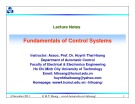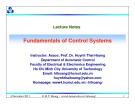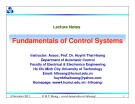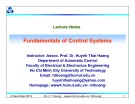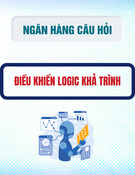Lecture Fundamentals of control systems: Chapter 2 - TS. Huỳnh Thái Hoàng
Lecture "Fundamentals of control systems - Chapter 2: Mathematical models of continuous control systems" presentation of content: Presentation of content, transfer function, block diagram algebra, signal flow diagram, state space equation, linearized models of nonlinear systems.


